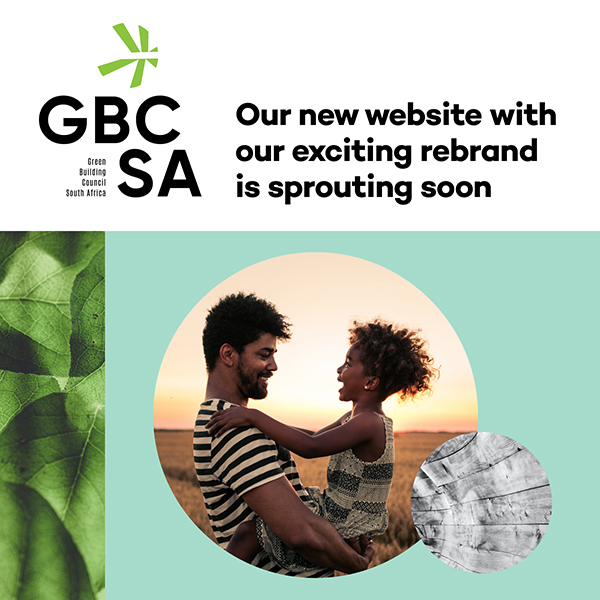
Design for sustainability is the pathway to a more resilient future
September 19, 2017
“The sustainable design community is central to a more resilient future. This is moving far beyond protection against natural and manmade disasters, to passive survivability in the face of unreliable infrastructures and new environmental challenges.”
This is the belief of Vivian Loftness, key member of Pittsburgh’s Carnegie Mellon University’s leadership in sustainability research and education, and contributor to the ongoing development of the ‘Intelligent Workplace’.
Loftness joins a compelling line-up of internationally recognised climate change and sustainability leaders to address the Green Building Council South Africa’s (GBCSA) Green Building Convention in Cape Town next month, where she will explore the latest global research and thinking behind design for sustainability.
Loftness’ singular passion is for sustainable architecture and the need to design buildings and communities throughout the world to a “zero state” where they have the smallest possible energy, water and material footprint without sacrificing quality of life. The statistics for energy are sobering and the need for resiliency design is clear: nearly 70 percent of all electricity in the United States goes towards building operations — heating and cooling systems, lighting, ventilation and plug loads. And so, the Intelligent Workplace was born. A showcase of the office of the future, it is a living lab that continuously tests innovations and runs experimental studies that are truly impactful for air quality, light, thermal comfort, acoustics, ergonomics and more.
For Loftness and her team of Intelligent Workplace researchers, the journey started with simple questions: How do you give people who work in buildings a comfortable environment while using the least possible energy? How do you make people accountable for their own energy footprints? And how can technology assist in that journey?
From lessons learned throughout her 30 year journey in the architectural and engineering sciences, Loftness has identified a need to design integrated “intelligent” systems that merge the natural, minimum resource conditioning solutions of the past with the innovative technologies of the future..
“Intelligent systems design engages and merges both low tech and high tech solutions for comfort, water, energy, food and mobility. For example, designing a community for walkability and bike-ability, while supporting smart infrastructures for transit and driving, is the mark of ‘intelligent mobility design’. Designing for xeriscaping and distributed water capture and storage for non-potable uses while supporting innovation in potable water infrastructures is the mark of ‘intelligent water design’.”
Design for a resilient future builds on the traditions of sustainability and adds integrated and regenerative practice approaches. . “Resource effectiveness, human health, wellness and quality of life are sustainable design goals that demand integrated design teams and an attention to detail that is continuous from design to construction to operation and even the deconstruction of buildings. Learning from and embracing the richness of each location’s natural systems is critical. The potential of biophilia – the recognition of man’s inherent need to connect to living systems – infuses nature and community into our designs. The research behind human and ecological health, and the shift to more integrated natural systems, ensures resiliency and is compelling and generative for the future of our projects”.
Loftness believes that applying sustainable design in the African context specifically is about recognising that Africa is a continent of diverse climates and rich natural and cultural systems that must be the foundation of unique sustainable design solutions region by region.
“Understanding the unique qualities of each climate and context is the foundation for sustainability – studying climates and natural systems, indigenous building and community design solutions for each, and embracing materials, assemblies and land use patterns that are unique and best suited to place. The sustainable architecture of hot dry Africa will – and should – be different than that of hot humid Africa and that of mild, year-round-comfortable Africa – with material and craft and quality of life patterns designed to support the longest stretches of natural comfort and resiliency.”
GBCSA CEO, Dorah Modise, says that Loftness’ zero state thinking is absolutely aligned with the GBCSA’s commitment to net zero and net positive energy buildings.
“At COP 21 in Paris in December 2015, the GBCSA publicly announced an ambitious target for a Net Zero carbon future along with its parent body, the World Green Building Council as well as sister Green Building Councils around the world. At this Global Climate Change Forum, we committed to ensuring that all new buildings are net zero energy by 2020, and all buildings are net zero energy by 2050.”
Modise adds that the GBCSA has taken this commitment one step further by striving for buildings that are not only net zero energy, but also net zero or net positive water, waste and ecology.
“Until now, the GBCSA has used rating tools that aim to gradually transform the market towards the cutting edge of sustainability. Net zero and net positive can accelerate the end goal of complete sector transformation, and inspire the end goal now. Given the urgency of mitigating the potentially devastating effects of climate change, we believe this is not only the right thing to do, but the only thing to do,” concludes Modise.
The 10th annual Green Building Convention takes place at the new Century City Conference Centre and Hotel in Cape Town from 9 – 11 October. For more information on the Green Building Convention 2017 or to register, go to www.greenbuildingconvention.org.za.






